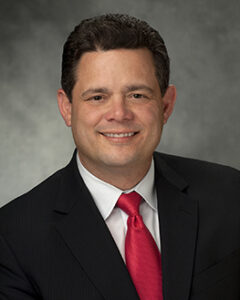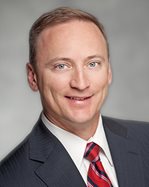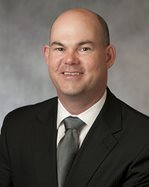Getting Back to Work: Lessons and Trends From Key Employers
May 7, 2020 Zoom Webinar Summary
Moderator:
 |
Joe Snell President & CEO Sun Corridor Inc. |
Panelists:
 |
Dave Hutchens CEO, UNS Energy COO, Fortis, Inc. |
 |
Wes Kremer President Raytheon Missiles & Defense |
 |
Lisa Lovallo Market Vice President, Southern Arizona Cox Communications |
 |
Ian McDowell Vice President & Tucson Regional Director, Building Group Sundt Construction |
Summary
Local business leaders Dave Hutchens, Wes Kremer, Lisa Lovallo and Ian McDowell discussed the current impacts of COVID-19 on their operations. They provided insight on some of the challenges and lessons learned throughout the pandemic and shared some of the trends and opportunities that they see on the horizon.
Each panelist highlighted health and safety as their top priority. Office employees are still working from home across these organizations, with safety measures in place for those required to be on site. There was a consensus among the panel that they would take a measured approach in returning to business as usual.
Increased remote work is the defining trend that they see continuing in the future. There was a lot of discussion about the effectiveness of telecommuting and the use of digital technology. Throughout the pandemic, these employers have been able to maintain productivity, and in some cases are finding that they are more efficient in areas of their business.
Overall, business is continuing to move forward with minimal disruption. Remote work has proven to be a surprisingly effective way to conduct business, with the health and safety of employees and the community remaining a priority for these employers.
Key Remarks
Dave Hutchens – Tucson Electric Power, UNS Energy and Fortis
- As an essential business, Tucson Electric Power (TEP) has continued operations “business as usual” with no layoffs or furloughs.
- Any employees that are typically in offices are working from home, about 60%. The rest are working jobs that require physical presence, such as powerplants or field operations working on site and maintaining the grid.
- There are precautions in place including PPE, hygiene & sanitization practices and social distancing for workers on site. They will have only one employee in a truck, for example.
- Dave indicated that they can effectively run their business like this. Since reentry is complicated and they are working effectively, they have time to manage return to the workplace in a slow and measured way.
- Dave emphasized the value of telecommuting and the prospect of increased remote work. The ability to meet with people without flying across the country and spending time on travel was valuable. He stated that TEP has become more efficient as an organization as a result of telecommuting.
- Dave predicts that there will be a hybrid version of interacting in person and via remote technology going forward. He highlighted that remote technology like Zoom is highly effective when you already have a relationship with the person, with in-person interactions being reserved for early relationship development and to make meaningful initial connections.
- As local businesses are shut down, they are using less electricity. There are also customers struggling to pay their bills.
- The biggest challenge will be how to return to the workplace. When we left the workplace at the beginning of COVID-19, it was better safe than sorry. It will be much more complicated going back. There is a spectrum of employees ranging from those who are highly concerned about returning to those who aren’t concerned enough.
- The biggest opportunity is reshoring manufacturing. We should be focusing on pulling that manufacturing base back to the US, back to Arizona, he said.
Wes Kremer – Raytheon Missiles & Defense
- Safety of workforce is Raytheon’s number one priority. Their second priority is to maintain “business as usual”.
- 60% of the national Raytheon workforce (18,000 people) are working from home. The 40% that require physical presence represent about 12,000 employees (4,800 in Tucson). They are mainly factory workers and those working on classified projects.
- With the recent merger, Raytheon was able to learn lessons from China early on. All workers wear masks and undergo temperature screens. They successfully prevented a few people with symptoms from entering the facilities and have been effectively contact tracing.
- Overall, their operations have been very efficient and are even finding that there are things that they are doing more efficiently than before.
- Raytheon will take a measured and selective approach to bringing people back since they are operating efficiently. He believes there will be stops and starts as COVID-19 continues to be a threat.
- Currently, there are no supply chain issues but that may change. Uncertainty is a challenge.
- Raytheon needs to hire 3,000 people this year. 500 interns that will be starting over the next few weeks. It’s hard to communicate culture and comradery over remote technology.
Lisa Lovallo – Cox Communications
- Cox’s number one focus is on employee and customer safety.
- With the outbreak, Cox technicians no longer enter people’s homes for installation. Before the pandemic, 40% of customers were confident they could do installation themselves. Now, it’s over 90% with an 85% success rate. Employees are still entering businesses to support critical companies. Workforce has been agile in adjusting to this.
- This hands-off installation process has been a goal for a while and the virus accelerated that process for Cox.
- On the advertising and sales side, they have transitioned to using technology like MS Teams and Skype for Business to stay close to customers that need contact and have a relationship with Cox.
- While some parts of Cox business are struggling, some aspects of the COVID-19 outbreak have helped the company adapt in new ways.
- Overall, the network is performing well and employees are working effectively.
- Employers need to be thoughtful about which technologies work best for their teams. Not all platforms are created equal.
- Cox is ensuring that service continues and they are helping the community in this time of need, like making sure every child is connected to school.
- A challenge is maintaining the Cox culture via Zoom, particularly with onboarding new employees. There is a different intimacy being built via screen. You get to see each other in a different way, each other’s homes, pets and kids for example.
Ian McDowell, Sundt
- In Arizona, construction was deemed essential and Sundt has continued business. 95% of people on project sites are continuing to go to work. Only about 10% work in offices, and the majority are working from home.
- There are new safety measures on job sites, including new handwashing stations and sanitization procedures.
- Sundt is being flexible with accommodations for employees. It’s not “business as usual”, but business is moving forward.
- When Sundt implemented safety procedures like temperature screens on site, they expected pushback. However, employees are thankful those measures are in place.
- Ian believes there could be future impacts on the built environment. We could see situations where construction companies are building shared spaces differently.
- Sundt will take a measured approach in returning things to normal.
- There will be opportunities to attract companies to Arizona. Tucson and Southern Arizona need to be creative and aggressive to find ways to capitalize.
What Have Been the Biggest Takeaways From This Experience?
“There is a lot of focus now on reshoring manufacturing. We should be focusing on pulling that manufacturing back to the U.S., back to Arizona.” – Dave Hutchens
“People are our greatest asset, and the most important thing is the safety of our employees.” – Wes Kremer
“One of the things that has been a little surprising is how quickly we are all are adapting to this new world. When we started working from home, it was like a light switch went on.” – Lisa Lovallo
“We’re trying to give people the opportunity to stay as safe as possible.” – Ian McDowell

